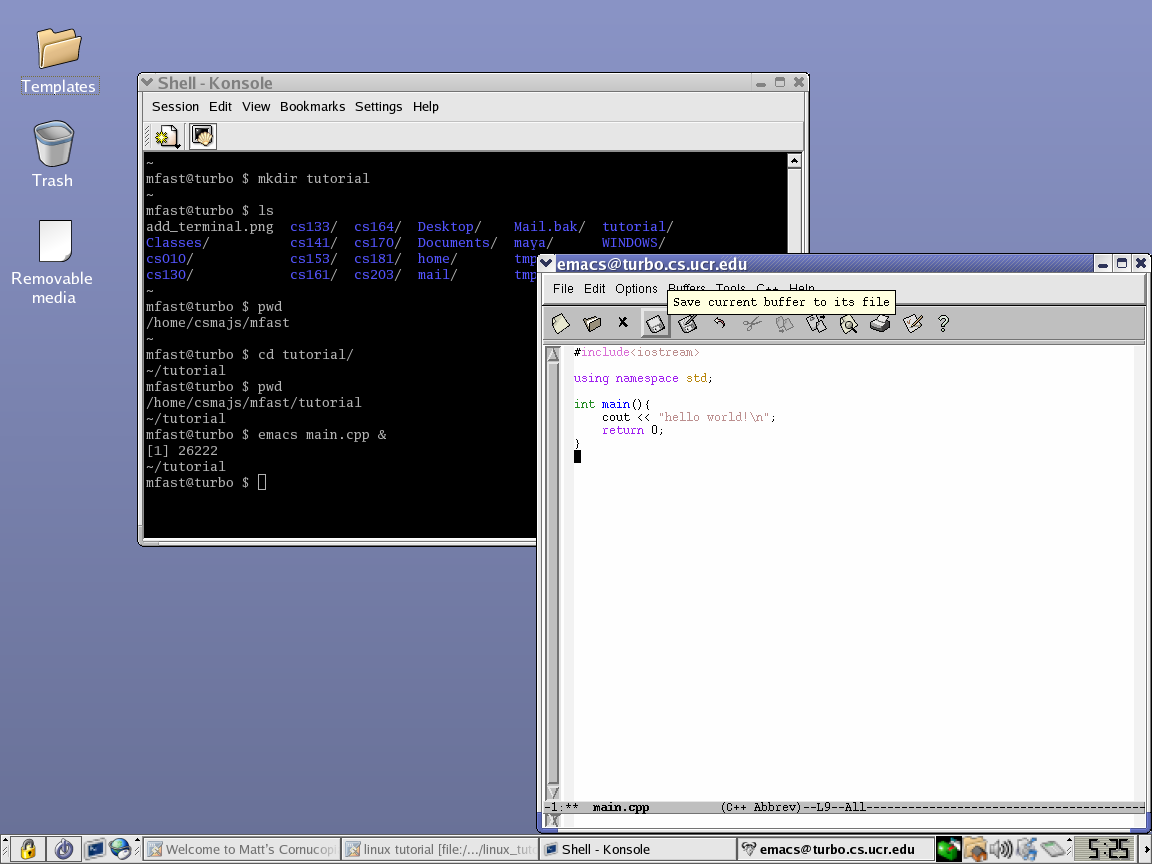

The combo C-x 3 means to press Ctrl+X as usual, and then the number 3 key. Sometimes, a keyboard shortcut has a mixture of key types. Sometimes, a keyboard shortcut isn't just one key combo and instead consists of a series of key presses.įor instance, C-x C-f means to press Ctrl+X as usual, and then Ctrl+F as usual. There's another level of keyboard shortcuts, though, quite unlike anything on modern computers. You press the keys together just as you do when you're cutting text from any application.

These aren't the C and M keys, and because they're always paired with an accompanying letter or symbol key, they're easy to recognize in the documentation.įor example, C-x means Ctrl+X in modern keyboard notation, and M-x is Alt+X.
Emacs tutorial Pc#
On a PC keyboard, the Ctrl key is referred to as C, and the Alt key is referred to as M. Use its menus, use your mouse to select regions and click in-buffer buttons, and don't let unfamiliarity stand in your way of being productive. There's no reason to punish yourself for choosing Emacs.
Emacs tutorial how to#
The GUI version of Emacs can be run on extremely low-powered devices, and it has lots of pragmatic features that both novice and experienced users can appreciate.įor example, if you don't know how to copy a word with just keyboard shortcuts in Emacs, the Edit menu's Copy, Cut, and Paste selections provide the path of least resistance. One of the greatest things about Emacs (and its friendly competitor, Vim, too) is that it can be run in a terminal, which is useful when you SSH into a server, but not very significant on computers built within the last 15 years or so. Here are ten tips to help you figure out what works best for you. The only way to get that experience is to start at the beginning-by actively using Emacs. To love Emacs, you have to discover the features it has that you've been looking for, sometimes without knowing you've been missing them.

emacs config files out there to prove that if there's one common strain among Emacs users, it's that everyone uses Emacs differently. That's a great way to discourage yourself from getting started with Emacs. I thought that all true Emacs users only ran it inside a terminal, and never used arrow keys or menus, much less a mouse. I sympathize with this because that's how I felt about Emacs. They want to use Emacs as they believe it's "meant to be used." They want to understand the arcane keyboard shortcuts and unfamiliar terminology. The problem, I believe, is that people don't actually want to learn Emacs they want to be comfortable with Emacs traditions. It's not because Emacs is bad or even that complex. Many people say they want to learn Emacs, but many of them shy away after the briefest encounter.


 0 kommentar(er)
0 kommentar(er)
